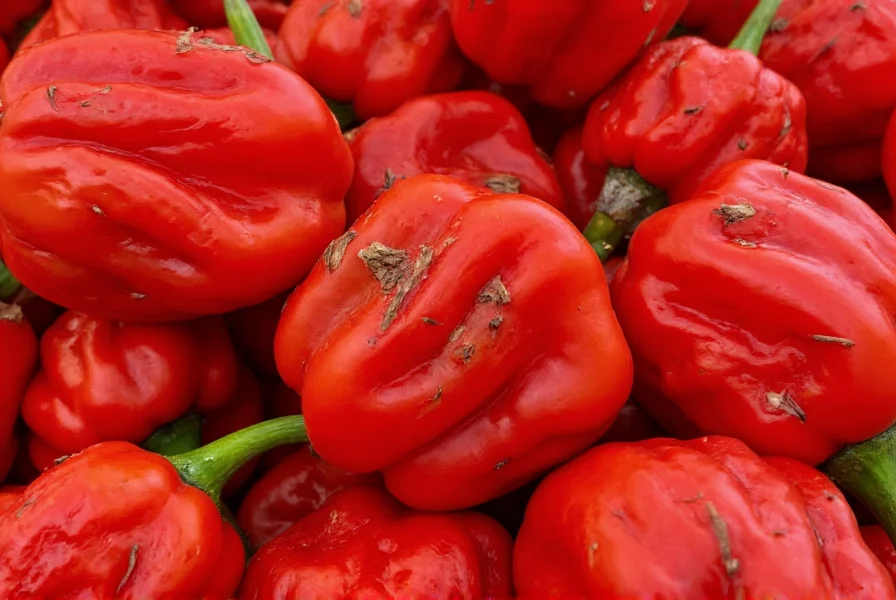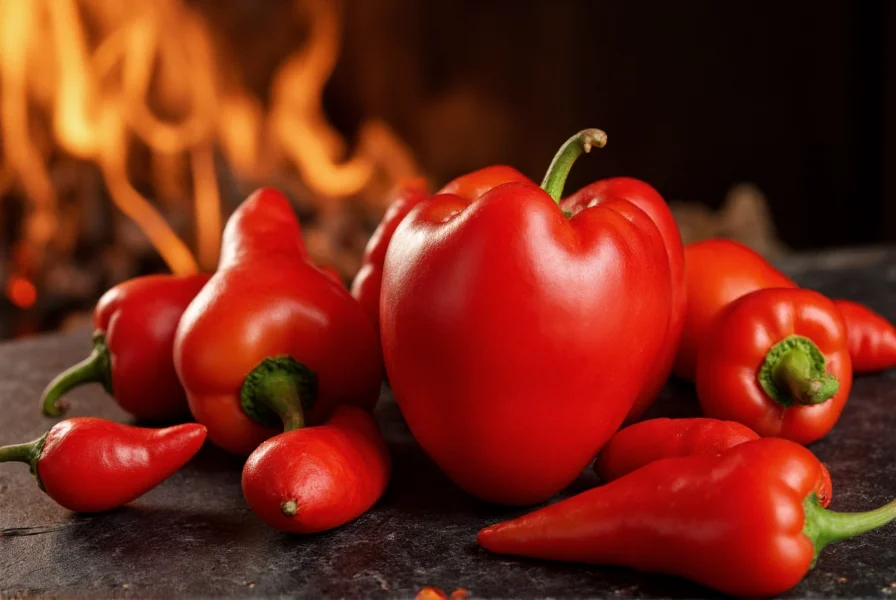When searching for what's the hottest pepper on Earth, you're entering the fiery world of extreme chili cultivation where heat measurements can make or break records. Understanding pepper heat requires knowledge of the Scoville scale—the scientific measurement system developed in 1912 by pharmacist Wilbur Scoville that quantifies capsaicin concentration, the compound responsible for that burning sensation.
The Carolina Reaper isn't just hot for novelty's sake. This pepper represents years of selective breeding between a Pakistani Naga and a Red Habanero from St. Vincent. Its distinctive red color and gnarled appearance with a characteristic small spike make it easily recognizable. When properly grown under optimal conditions, individual Carolina Reaper peppers can reach astonishing heat levels between 1.4 million and 2.2 million SHU.

Understanding Pepper Heat Measurement
Before exploring the current hottest peppers, it's essential to understand how heat is measured. The Scoville Organoleptic Test, though largely replaced by High Performance Liquid Chromatography (HPLC) today, established the standard we still use. Modern testing provides precise measurements of capsaicinoids—the chemical compounds that create heat—then converts these measurements to Scoville Heat Units for consumer understanding.
It's important to note that pepper heat varies significantly based on growing conditions, soil composition, climate, and even the specific part of the pepper tested. The placenta (the white ribs inside the pepper) contains the highest concentration of capsaicin, while the seeds themselves contain minimal heat (they just come in contact with the hot placenta).
Current Hottest Pepper Contenders
While the Carolina Reaper maintains its official Guinness World Records title, several new peppers have emerged claiming higher heat levels:
- Carolina Reaper (Official Record Holder): 1.4-2.2 million SHU
- Pepper X (Unverified Claim): Approximately 3.18 million SHU
- Dragon's Breath (Unverified Claim): Approximately 2.48 million SHU
- Trinidad Moruga Scorpion: 1.2-2 million SHU
- 7 Pot Douglah: 1-1.8 million SHU
What separates officially recognized records from claims? Guinness World Records requires multiple samples tested by an independent laboratory using HPLC methodology, with results published in a peer-reviewed journal. Many "hottest pepper" claims fail to meet these rigorous verification standards.
| Pepper Variety | Scoville Heat Units (SHU) | Official Recognition | Relative Heat Comparison |
|---|---|---|---|
| Carolina Reaper | 1,400,000-2,200,000 | Guinness World Record Holder | 280,000x hotter than mild bell pepper |
| Pepper X | ~3,180,000 | Unverified claim | Theoretical maximum |
| Dragon's Breath | ~2,480,000 | Unverified claim | Requires medical supervision for consumption |
| Trinidad Moruga Scorpion | 1,200,000-2,000,000 | Former record holder | 240,000x hotter than mild bell pepper |
| Habanero | 100,000-350,000 | N/A | 70x hotter than jalapeño |
Safety Considerations for Handling Super Hot Peppers
Working with the world's hottest peppers requires serious precautions. Capsaicin is oil-based and won't wash off with water alone. When handling extremely hot peppers like the Carolina Reaper or potential contenders:
- Always wear nitrile gloves (latex won't protect you)
- Avoid touching your face, especially eyes and nose
- Work in well-ventilated areas to avoid inhaling capsaicin particles
- Have dairy products (milk, yogurt) nearby to neutralize heat if accidentally consumed
- Never use plastic bags for storage—capsaicin can leach through
If you accidentally get capsaicin on your skin, wash with soap and cold water (hot water opens pores), then apply a mixture of baking soda and water. For eye exposure, flush with saline solution or milk—never rub your eyes.
The Science Behind Extreme Pepper Heat
Pepper heat serves an evolutionary purpose. In nature, capsaicin deters mammals from eating peppers (who would destroy the seeds through digestion) while attracting birds (who spread the seeds intact). The hotter the pepper, the more capsaicin it produces as a defense mechanism.
Breeding super hot peppers involves crossing already hot varieties and selecting offspring with increasingly higher heat levels—a process that can take many generations. The current hottest pepper contenders represent the extreme edge of what's biologically possible in Capsicum chinense species.
Culinary Applications of the World's Hottest Peppers
Despite their extreme heat, the hottest peppers have legitimate culinary uses when handled properly:
- Small amounts add complex fruity notes to sauces and hot sauces
- Used in minute quantities for heat infusion in oils and vinegars
- Featured in competitive eating challenges (with medical supervision)
- Some traditional medicines use diluted capsaicin for pain relief
- Pepper extracts serve as active ingredients in self-defense sprays
Professional chefs working with the hottest peppers often use specialized equipment like fume hoods and handle peppers with extreme care. For home cooks, it's generally recommended to start with much milder peppers and work your way up the heat scale gradually.
Common Misconceptions About Super Hot Peppers
Several myths persist about the world's hottest peppers:
- Myth: The seeds contain the most heat
Fact: The placenta (white ribs) contains the highest concentration of capsaicin - Myth: Drinking water helps with pepper burn
Fact: Water spreads the oil-based capsaicin; dairy products are far more effective - Myth: Heat level is consistent across all peppers of the same variety
Fact: Heat varies significantly based on growing conditions - Myth: Eating super hot peppers is dangerous
Fact: While uncomfortable, healthy adults can safely consume small amounts











 浙公网安备
33010002000092号
浙公网安备
33010002000092号 浙B2-20120091-4
浙B2-20120091-4